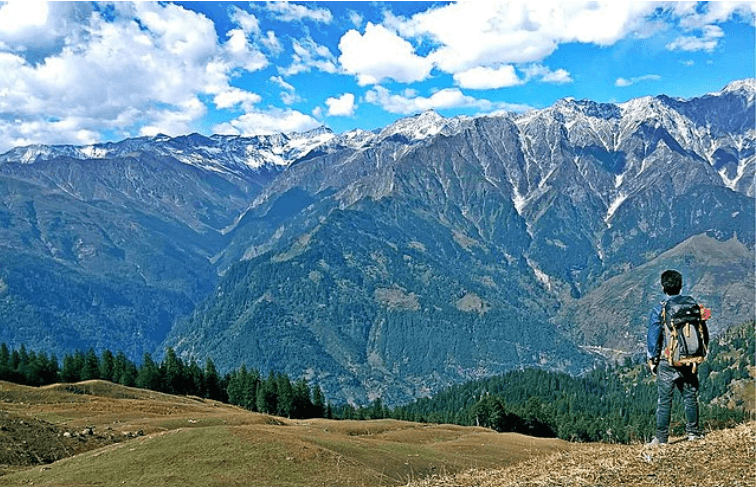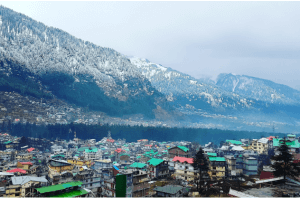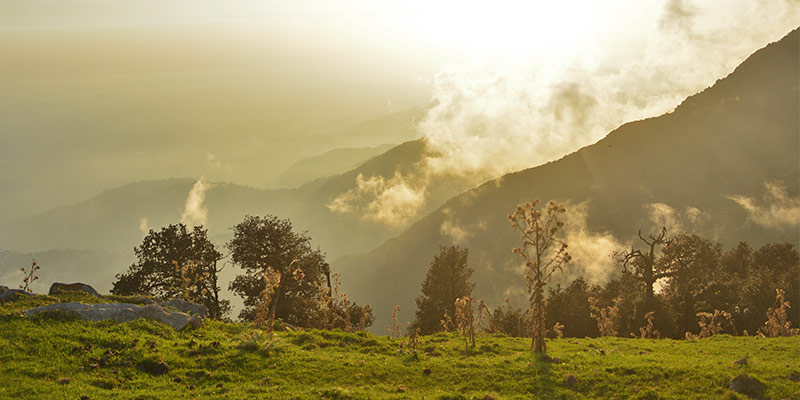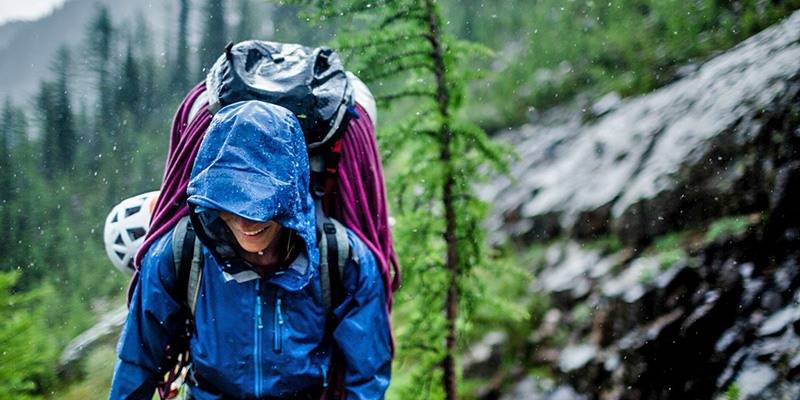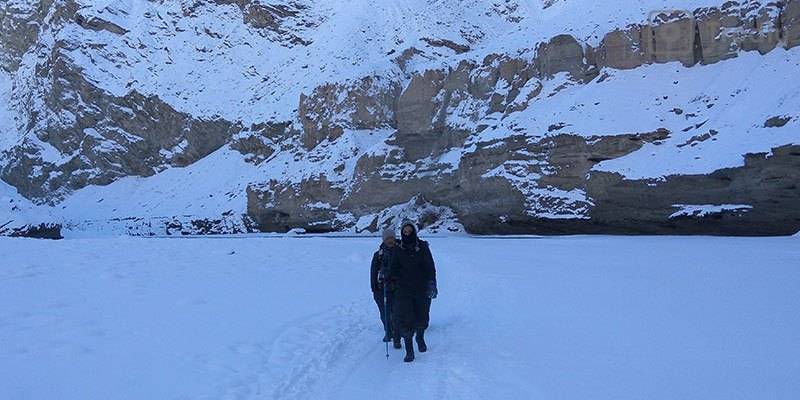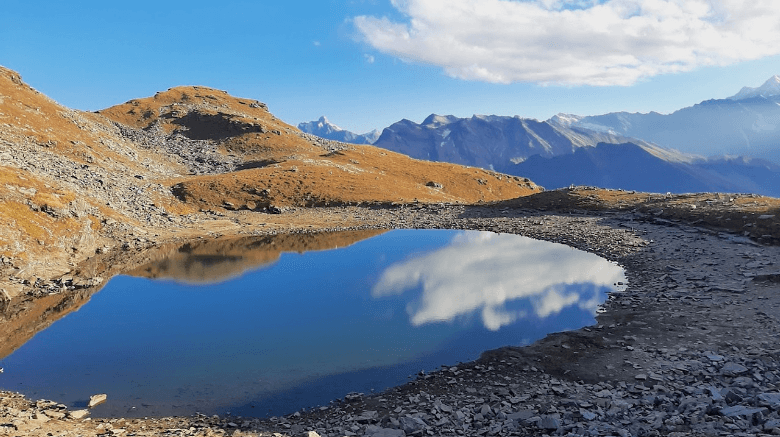
Embarking on the trek from Manali to Bhrigu Lake is an adventure that blends the thrill of exploration with the serenity of nature’s untouched beauty. Nestled in the heart of Himachal Pradesh , this journey not only offers breathtaking vistas of Solang Valley and Rohtang Pass but also provides a unique opportunity for camping under the starlit sky near the mystical Bhrigu Lake . The significance of this trek extends beyond the physical journey, as it allows trekkers to immerse in the rich cultural tapestry of the region while challenging their own limits. The Manali to Bhrigu Lake trek embodies the spirit of adventure and exploration, making it a must-experience for enthusiasts and seasoned trekkers alike.
This article serves as a comprehensive guide to navigating the Manali to Bhrigu Lake trek, detailing every aspect from preparation to completion. It will outline the optimal time for undertaking this journey, the best ways to reach Manali, and a step-by-step breakdown of the trek across three days, including the ascent from Manali to Rola Kholi, the pivotal trek to Bhrigu Lake, and the return journey through Gulaba. Additionally, it will provide a packing guide and tips to ensure participants are well-prepared for the trek. With a focus on practical advice, this guide aims to equip readers with all the necessary information to navigate the Bhrigu lake trekking experience successfully, making the most of the Bhrigu lake trek distance and the diverse landscapes it covers.
Contents
Bhrigu Lake Trek Overview
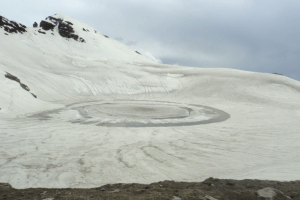
Highlight of the Trek
The Bhrigu Lake trek offers a mesmerizing journey through diverse landscapes, including lush green meadows, dense forests, and panoramic mountain views. This trek is renowned for its breathtaking glacial lake, Bhrigu Lake, which is nestled in the Himalayas at an altitude of approximately 4,267 meters above sea level. The lake’s crystal-clear waters reflect the surrounding snow-capped peaks, providing a spectacular view . Trekkers can enjoy the pristine beauty of the lake and the awe-inspiring vistas of the Pir Panjal range, making it an unforgettable experience .
Location and Start Point
Bhrigu Lake is located in the Kullu district of Himachal Pradesh, east of Rohtang Pass. The usual starting point for the trek is Gulaba, which is about 22 kilometers from Manali. From Manali, trekkers can reach Gulaba by taxi or local bus, a journey that takes around one hour by road . The trek begins at an altitude of 3,000 meters at Gulaba and ascends to the picturesque campsite of Rola Kholi at an altitude of 3,810 meters .
Distance and Duration
The Bhrigu Lake trek is considered one of the shortest and most approachable high-altitude treks in the Himalayas. The total distance covered during the trek is about 22 kilometers from Manali to the lake . The trek spans over three days, with the first day involving a climb to Rola Kholi, the second day an early morning ascent to Bhrigu Lake, and the final day a descent back to Gulaba . The paths include heavy ascents especially on the first two days, requiring good leg strength and stamina to navigate the moderate-level trek .
Preparing for the Trek
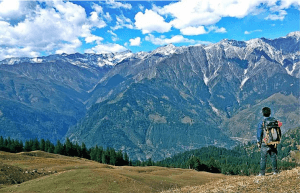
Physical Fitness
Physical readiness is paramount for the Bhrigu Lake Trek, given the trek’s challenging nature and high altitude. It is crucial to start a fitness regime at least a few weeks prior to the trek. Initiating with basic exercises such as jogging, cycling, or swimming can significantly enhance endurance levels. Additionally, incorporating leg-strengthening exercises like lunges, squats, and leg presses will prepare trekkers for the steep ascents encountered during the trek . Achieving a fitness level where one can comfortably cover 4 km in 35 minutes without undue stress is essential . Trekkers should also ensure their resting pulse rate is between 60 to 90 beats per minute, and blood pressure readings fall within the normal range .
Mental Preparation
Preparing mentally is just as important as physical readiness. Understanding the physical demands and the high-altitude environment of the trek is crucial. Trekkers should be aware of the symptoms of altitude sickness and the body’s response to high altitudes. Mental resilience will help manage the physical challenges and enhance the overall trekking experience. It is beneficial to familiarize oneself with the trek’s itinerary and potential challenges to set realistic expectations and mentally prepare for the journey.
Essential Documents
Before setting out on the Bhrigu Lake Trek, all trekkers must ensure they carry the necessary documentation. A medical disclaimer signed by a certified doctor is mandatory, confirming the trekker’s fitness for high-altitude trekking . Original copies
of valid ID proof such as Aadhar, Voter ID, or Driving License, along with two passport-size photographs, must be presented to the trek leader at the base camp . These documents are vital for entry at various check posts throughout the trek. Additionally, it is advised to carry a well-organized first-aid kit and any personal medications required to address allergies or pre-existing medical conditions .
In preparing for the trek, it is essential to cover all aspects meticulously to ensure safety and enjoyment. This comprehensive preparation will not only make the trek more manageable but also more enjoyable, allowing trekkers to fully immerse themselves in the stunning landscapes and unique experiences that the Bhrigu Lake Trek offers.
Best Time to Trek
Seasonal Changes and Weather Conditions
| Season | Months | Weather Conditions | Lake Appearance | Temperature | Challenges | Best Trekkers |
| Summer | May-June | Mild, clear skies | Stunning blue lagoon, surrounded by melting snow and greenery | Day: 15-20°C, Night: 5-10°C | None | All trekkers |
| Monsoon | July-August | Heavy rainfall, slippery trails, landslides | Lush green landscape | Day: 10-20°C, Night: 5-8°C | High risk of landslides, difficult trekking | Not recommended |
| Post-Monsoon | September-October | Clear skies, stable weather | Lake turns white, serene landscape | Day: 10-15°C, Night: 4-6°C | None | All trekkers |
| Winter | November-March | Snowy wonderland, extreme cold | Entire region covered in snow | Day: 0-5°C, Night: below 0°C | Extreme cold, challenging trek | Experienced trekkers only |
The ideal time to embark on the Bhrigu Lake Trek varies significantly with the seasons, each offering distinct experiences and challenges. During the summer months from May to June, trekkers can enjoy mild weather, with daytime temperatures ranging from 15°C to 20°C and cooler nights that may drop to between 5°C and 10°C . This period is marked by the transformation of the lake into a stunning blue lagoon, surrounded by melting snow and burgeoning greenery, providing a vibrant contrast against the stark white of the remaining snow .
However, the monsoon season from July to August introduces a higher level of difficulty due to heavy rainfall, making the trails slippery and increasing the risk of landslides. During these months, daytime temperatures hover between 10 degrees to 20 degrees Celsius, cooling down to 5 degrees to 8 degrees Celsius at night . Despite these challenges, the monsoon also enhances the scenic beauty of the trek with lush green landscapes, though trekking is generally advised against during this period due to safety concerns .
Post-monsoon, from September to October, the weather stabilizes, offering clearer skies and more predictable conditions. The landscape transitions from green to a rich tapestry of browns and golds, and the lake often turns white, providing a serene and frosty appearance. Daytime temperatures during these months are comfortable, ranging from 10 degrees to 15 degrees Celsius, with night temperatures falling to between 4 degrees and 6 degrees Celsius . This time also presents an excellent opportunity for stargazing, thanks to the clear skies .
For those seeking the thrill of a winter trek, the months from November to March present a snowy wonderland. The entire region is enveloped in snow, offering breathtaking views and a challenging trekking experience. Daytime temperatures can drop to between 0°C and 5°C, with nights reaching sub-zero conditions . This season is recommended for experienced trekkers who are well-prepared for extreme cold and equipped to handle the rigorous conditions of a high-altitude winter trek .
Regardless of the season, it is crucial for trekkers to stay updated with the latest Bhrigu Lake weather forecasts and prepare accordingly. Each season offers unique experiences and challenges, making the Bhrigu Lake Trek a versatile and rewarding adventure for those who plan well and respect the natural conditions of this high-altitude trek .
How to Reach Manali

Manali, a cherished hill station in the northern Indian state of Himachal Pradesh, is nestled in the Kullu Valley at an altitude of approximately 2,050 meters above sea level. This destination is well-connected by various modes of transportation, making it accessible for travelers planning to embark on the Bhrigu Lake trek or explore its scenic landscapes.
By Air
The nearest airport to Manali is Kullu-Manali Airport, also known as Bhuntar Airport, situated about 50 kilometers from Manali. Regular flights connect Kullu-Manali Airport with major cities such as Delhi, Chandigarh, and Shimla. For those coming from Delhi, the flight to Kullu lasts about 1.5 hours, offering a quick and scenic route to the region. Upon arrival, travelers can hire a taxi or utilize local transportation services to reach Manali, which takes approximately an hour and a half.
By Train
For those preferring rail travel, the nearest railway station is Joginder Nagar, located about 166 kilometers from Manali. From Joginder Nagar, one can continue the journey to Manali by taxi or bus, which takes around 4 hours. Alternatively, travelers can also consider the major railway station at Chandigarh, about 310 kilometers away, where trains like the Kalka Shatabdi Express and Chandigarh SF Express operate. From Chandigarh, it takes approximately 6 hours and 30 minutes to reach Manali by road.
By Road
Manali is well-connected to major cities like Delhi, Chandigarh, and Shimla through an extensive network of roads. The road journey from Delhi to Manali spans approximately 540 kilometers and typically takes about 14 to 16 hours, depending on traffic conditions. Travelers can opt for government-run buses like those from Himachal Road Transport Corporation (HRTC) or private bus services, which offer various classes of comfort from regular to luxury and Volvo buses.
By Bus
Regular bus services operate from major cities such as Delhi, Chandigarh, and Shimla to Manali. From Delhi, buses usually depart in the afternoon and evening, reaching Manali the following morning. It’s advisable to choose a bus that leaves Delhi around 5.30 pm to avoid heavy traffic and ensure a morning arrival in Manali. For added comfort, travelers can opt for services like Lakshmi Holidays, known for their reliability and punctuality.
Each mode of transportation to Manali offers its own unique advantages, allowing travelers to choose based on their convenience, budget, and preference. Whether arriving by air, train, road, or bus, the journey to Manali is just the beginning of an exciting adventure that awaits in the beautiful landscapes of Himachal Pradesh.
Day 1: Manali to Rola Kholi
Drive from Manali to Gulaba
The journey from Manali to Gulaba marks the commencement of the Bhrigu Lake trek. Travelers depart early, covering a distance of 26 kilometers which typically takes about an hour. The route follows along the Beas River, passing through the scenic locales of Palchan and the picturesque village of Kothi, known for its popularity in Bollywood films. The drive continues to the last curve of Gulaba, where the trekking adventure begins .
Trek from Gulaba to Rola Kholi

Upon reaching Gulaba, trekkers cross the road to start the ascent. This segment of the trek involves navigating through dense forests of Deodar and Fir, and crossing pastures like Khanora Thach. The trail offers stunning views of Solang, Kothi, and peaks like Hanuman Tibba. The presence of diverse bird species, including the spectacular Monal pheasant, enhances the trekking experience .
The path from Gulaba is characterized by its lush landscapes, featuring golden apple trees and vibrant green meadows. Trekkers encounter numerous streams approximately every 3 to 4 kilometers, which are vital for replenishing water supplies. The trek continues through thick forests of Himalayan birch, oak, and pine trees, accompanied by the sounds of nature and a view that resembles a wonderland shrouded in misty clouds and dew drops .
After about 2 kilometers, trekkers reach the first water stream at Rola Kholi, an ideal spot for lunch surrounded by a terrain covered with colorful flowers, such as dandelions. The journey proceeds with a steep climb, leading to the Rola Kholi campsite after covering about 6 kilometers. This campsite offers a splendid opportunity to observe the night sky, twinkling stars, and panoramic views of the Solang Valley, Beas Kund Valley, and peaks like Deo Tibba and the Seven Sister Peaks .
Rola Kholi itself serves as a picturesque grazing ground used by local shepherds and is situated at the base of Bhrigu Lake, making it an ideal spot for camping. The water source here, Chor Nallah, flows across the camping area, adding to the serene ambiance. Early mornings at the campsite are particularly magical, with clouds floating below and sun rays dancing over them, creating a rare and enchanting spectacle .
Day 2: Rola Kholi to Bhrigu Lake and Back
Trek to Bhrigu Lake
The second day of the trek begins early, as trekkers leave Rola Kholi and embark on a challenging ascent to Bhrigu Lake. The trek involves a steep climb, particularly during the last 5 kilometers, where the elevation gain is significant. The path to Bhrigu Lake, situated at an impressive altitude of 14,000 feet, is both exhilarating and demanding .
Trekkers start their journey early in the morning, aiming to maximize daylight hours for the hike. The trail initially passes through a picturesque landscape of alpine meadows, where the terrain changes texture and color, providing stunning views of the surrounding peaks and valleys. As they ascend, participants encounter patches of snow and ice, remnants of the winter season, adding to the trek’s adventurous nature .
The final stretch to the lake is the most challenging, with a sharp incline that tests the stamina and determination of the hikers. However, the reward is substantial as they reach Bhrigu Lake, nestled between two high-altitude ridges. The lake, often shrouded in fog, presents a serene and mystical atmosphere, with its clear waters reflecting the surrounding snow-capped peaks .
Return to Rola Kholi
After spending time at Bhrigu Lake, trekkers retrace their steps back to Rola Kholi. The descent, while less strenuous than the ascent, requires careful navigation to avoid slips and falls on the potentially slippery slopes. The return journey offers a different perspective of the landscape, with the afternoon sun casting long shadows and highlighting the rugged beauty of the terrain .
Back at Rola Kholi, trekkers have the opportunity to relax and reflect on the day’s experiences. The campsite, surrounded by lush meadows and a clear mountain stream, provides a perfect setting to rest and rejuvenate. Here, they share stories of the day’s adventure with fellow trekkers, building camaraderie and enjoying the communal aspect of the trekking experience.
The day concludes with a sense of accomplishment and anticipation for the next phase of the journey, as the trekkers prepare for the final descent to Gulaba and ultimately back to Manali. The memories of Bhrigu Lake, with its stunning vistas and challenging trails, remain a highlight of the trekking experience in the Himalayas.
Day 3: Rola Kholi to Gulaba to Manali
Trek back to Gulaba
The final day of the trek begins early as trekkers dismantle their campsite at Rola Kholi and prepare for the descent. They leave around 8 AM, embarking on a less demanding trail compared to the previous days. The journey back to Gulaba is marked by easy descents, providing ample opportunity to soak in the serene beauty of the Deodar forests and occasional meadows that open up breathtaking views of the snow-clad mountains to the north and west .
As trekkers progress, they pass through charming landscapes including apple orchards and traditional Kulluvi houses, enhancing the cultural experience of the trek. The path also offers refreshing stops at small clearings, allowing trekkers to rest and enjoy the natural surroundings. The descent concludes around 12 PM when they reach Gulaba, marking the end of the trekking portion of the journey .
Drive to Manali
Once at Gulaba, a pre-arranged vehicle awaits to transport the group back to Manali. This drive, scheduled to depart around 2 PM, offers a comfortable and scenic return to the bustling town . The road back can be busy, as it is frequented by tourists heading to and from various attractions around Manali. Trekkers are often advised to stay an additional night in Manali if they are traveling by flight the next day, allowing them to rest and recover from the trek .
The drive back is not just a physical journey but also a time for reflection on the experiences and challenges overcome during the trek. It’s a moment to bond further with fellow trekkers, sharing stories and memories that will last a lifetime. This final leg of the journey back to Manali marks the conclusion of an adventurous and transformative trek to Bhrigu Lake, leaving trekkers with a sense of accomplishment and a deepened appreciation for the natural beauty of Himachal Pradesh .
Packing Guide and Tips
Clothing and Accessories
When preparing for the Bhrigu Lake trek, it is essential to pack clothing that is versatile and suitable for rapidly changing weather conditions. Trekkers should bring layers of clothing, including long-sleeved shirts, pants, and a warm jacket or sweater to accommodate temperature fluctuations . A good quality windcheater jacket or down jacket is crucial for protection against the cold, especially at higher altitudes . Additionally, a pair of durable, water-resistant trekking shoes with good ankle support is recommended to navigate the rugged terrain . Accessories like a woolen cap, gloves, and polarized sunglasses will protect against the cold and intense sunlight reflected off the snow .
Food and Water
For sustenance throughout the trek, carrying non-perishable, high-calorie snacks and meals is vital . Energy bars, dry snacks, and instant noodles are practical choices, and trekkers may also carry a portable stove for cooking . Hydration is critical; thus, carrying two water bottles and a water purifier to treat water from natural sources is advisable . Additionally, having a CamelBak or similar water bladder can ensure easy access to water without having to stop and fetch a bottle .
Safety and Health Tips
A well-stocked first-aid kit is a must-have, including bandages, antiseptic, essential medications, and altitude sickness tablets like Diamox . Trekkers should also pack a headlamp for visibility in low light conditions and a whistle for emergency signaling . To prevent frostbite and hypothermia, it is crucial to wear proper clothing and keep dry; moisture-wicking fabrics are recommended for inner layers . Lastly, ensure to carry sun protection like sunscreen and lip balm to shield from UV rays, which are more intense at high altitudes .
Conclusion
The journey from Manali to Bhrigu Lake offers an unforgettable adventure through captivating landscapes, cultural insights, and challenging terrains, providing a holistic trekking experience. This guide has meticulously covered every aspect of the trek, ensuring nothing is left out—from detailed itineraries and seasonal advice to essential packing tips and fitness requirements. Through careful preparation and an understanding of what to expect, trekkers can fully immerse themselves in the beauty and challenge of this high-altitude journey, creating memories that will last a lifetime.
Reflecting on the significance of this trek, it’s clear that the experiences gained extend far beyond the physical journey. Trekking to Bhrigu Lake offers a profound connection to nature, an appreciation for the richness of Himachal Pradesh’s natural landscapes, and a sense of accomplishment that comes from reaching one of the Himalayas’ hidden gems. As this guide concludes, may it serve as a valuable resource for all aspiring trekkers, encouraging further exploration, respect for the natural environment, and the pursuit of personal challenges within the majestic Himalayas.
FAQs
- What is the route to Bhrigu Lake from Manali?
To reach Bhrigu Lake from Manali, follow this itinerary:
- Day 1: Arrive in Manali and drive to Gulaba Roadhead via Palchan.
- Day 2: Trek from Jonker Thatch to Rola Kholi.
- Day 3: Trek from Rola Kholi to Bhrigu Lake and return to Rola Kholi.
- Day 4: Trek from Rola Kholi back to Gulaba.
This map and schedule outline the trek route, campsites, and terrain details.
- How challenging is the Bhrigu Lake trek?
The Bhrigu Lake trek is considered a moderate-level trek. It does not require advanced mountaineering skills, but being physically fit is beneficial. The path includes steep climbs and descents, particularly in the Beas Kund Valley, which may pose challenges. - Is it possible to complete the Bhrigu Lake trek in two days?
Yes, the Bhrigu Lake trek can be completed in two days by experienced trekkers. However, for most people, it is advisable to allocate three days for this trek. Given that Bhrigu Lake is situated at an altitude of 4,200 meters, it is important not to rush and to be well-prepared, especially if you have prior experience with similar treks. - Can I undertake the Bhrigu Lake trek solo?
Absolutely, the Bhrigu Lake trek is suitable for solo travelers. This moderate-level trek starts at an altitude of 8,530 feet at Gulaba and ascends to the highest campsite at 14,100 feet, making it an exciting challenge for independent trekkers.
We hope we have clarified all possible doubts that you may have!
For more queries, reach out to Trodly.com.
Happy Trekking 🙂
Last Updated on August 20, 2024 by Rohan

